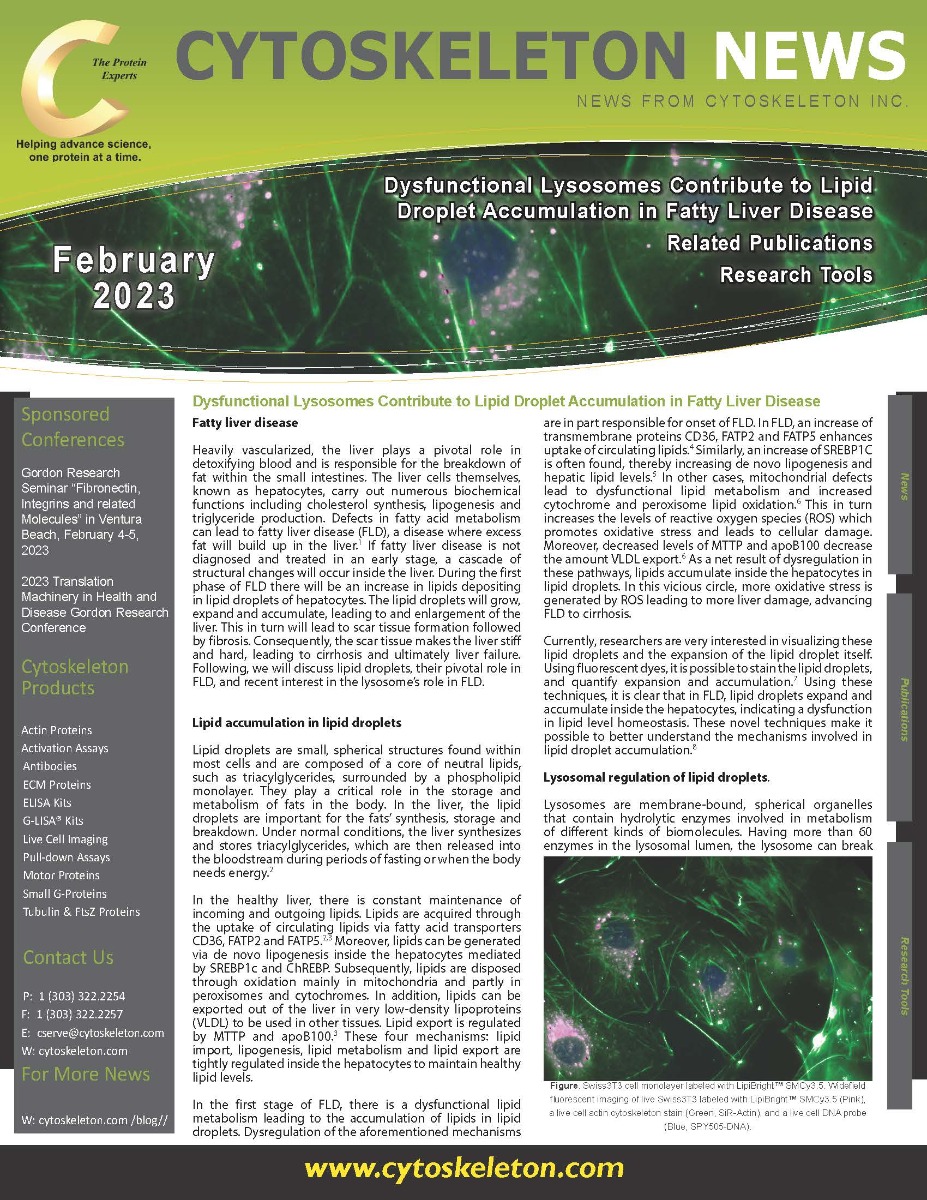Dysfunctional Lysosomes Contribute To Lipid Droplet Accumulation In Fatty Liver Disease
- By Cytoskeleton Inc. - Live Cell News
- Feb 2, 2023

Heavily vascularized, the liver plays a pivotal role in detoxifying blood and is responsible for the breakdown of fat within the small intestines. The liver cells themselves, known as hepatocytes, carry out numerous biochemical functions including cholesterol synthesis, lipogenesis and triglyceride production. Defects in fatty acid metabolism can lead to fatty liver disease (FLD), a disease where excess fat will build up in the liver.1 If fatty liver disease is not diagnosed and treated in an early stage, a cascade of structural changes will occur inside the liver. During the first phase of FLD there will be an increase in lipids depositing in lipid droplets of hepatocytes. The lipid droplets will grow, expand and accumulate, leading to and enlargement of the liver. This in turn will lead to scar tissue formation followed by fibrosis. Consequently, the scar tissue makes the liver stiff and hard, leading to cirrhosis and ultimately liver failure. Following, we will discuss lipid droplets, their pivotal role in FLD, and recent interest in the lysosome’s role in FLD.
Also Included in This Newsletter
- Memglow™ and New LipiBright™ Tools
- Related Publications

